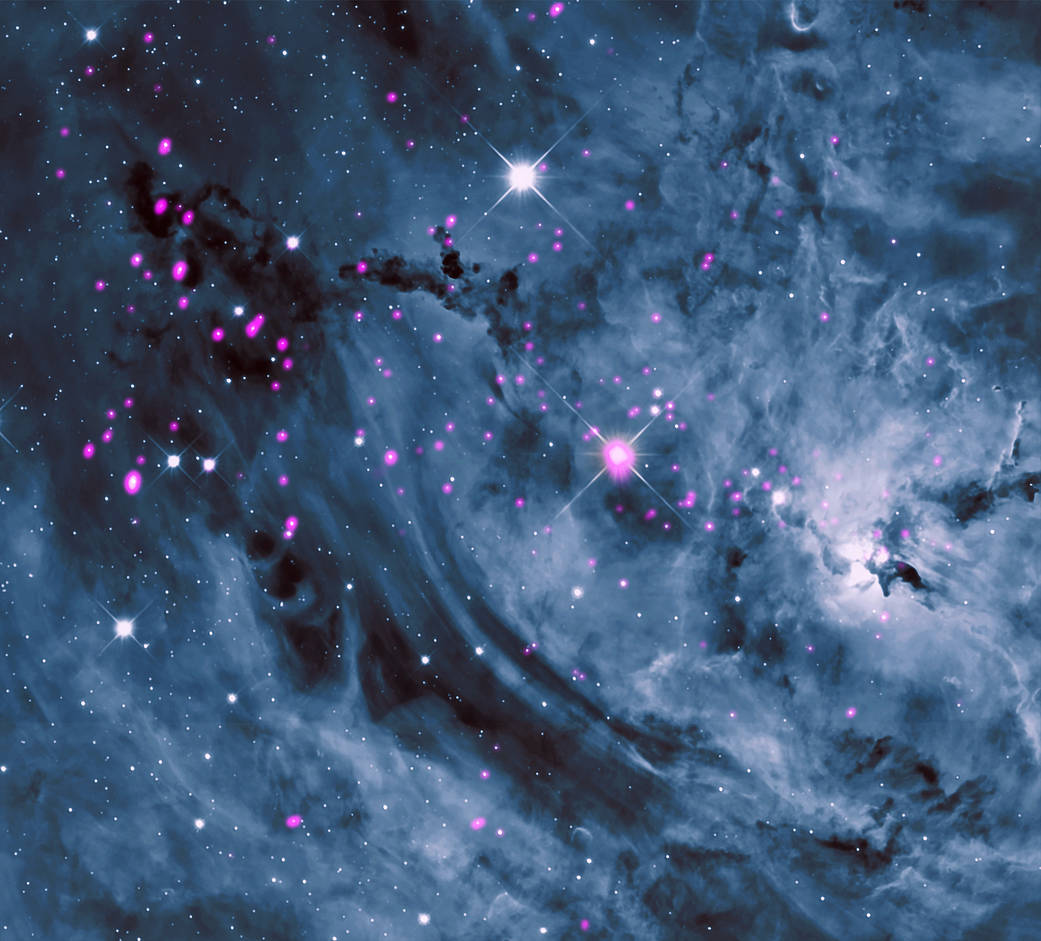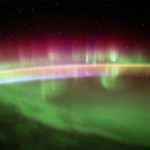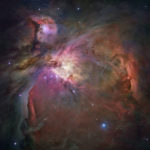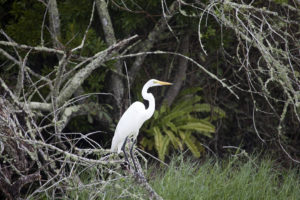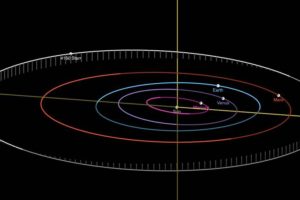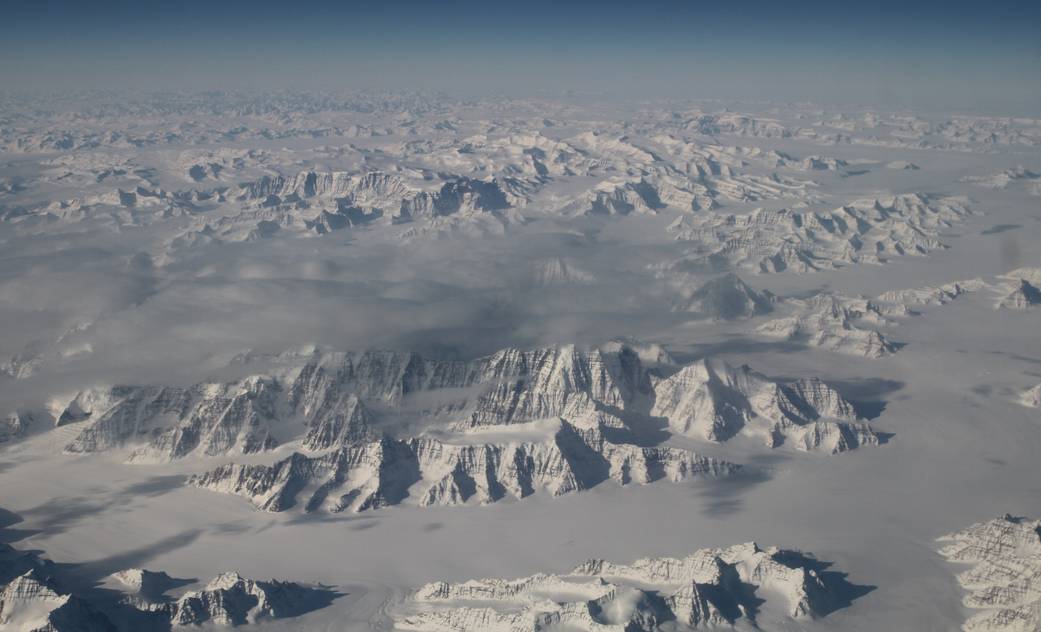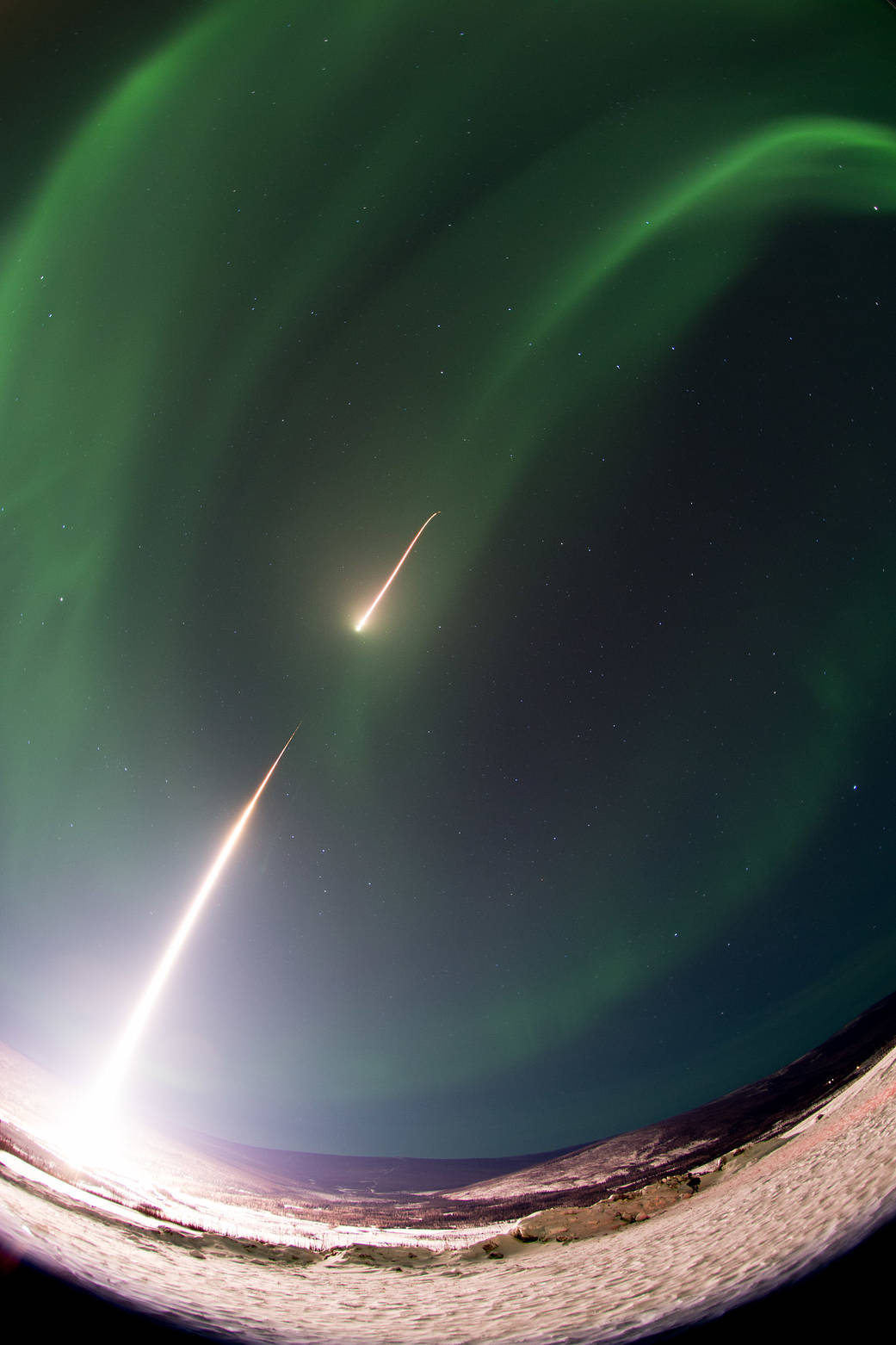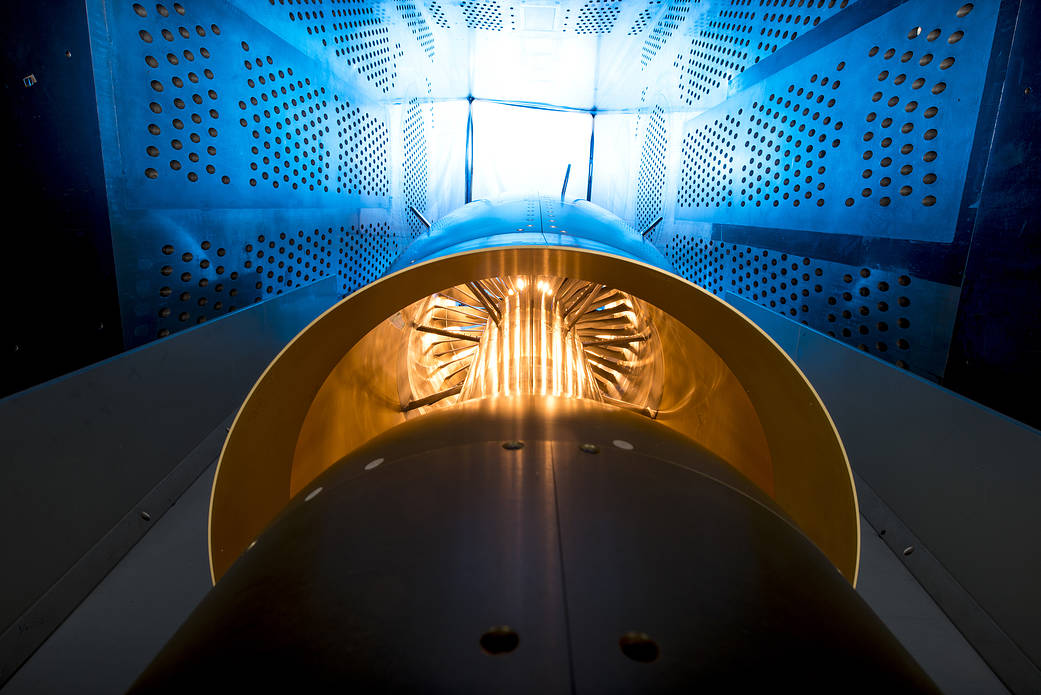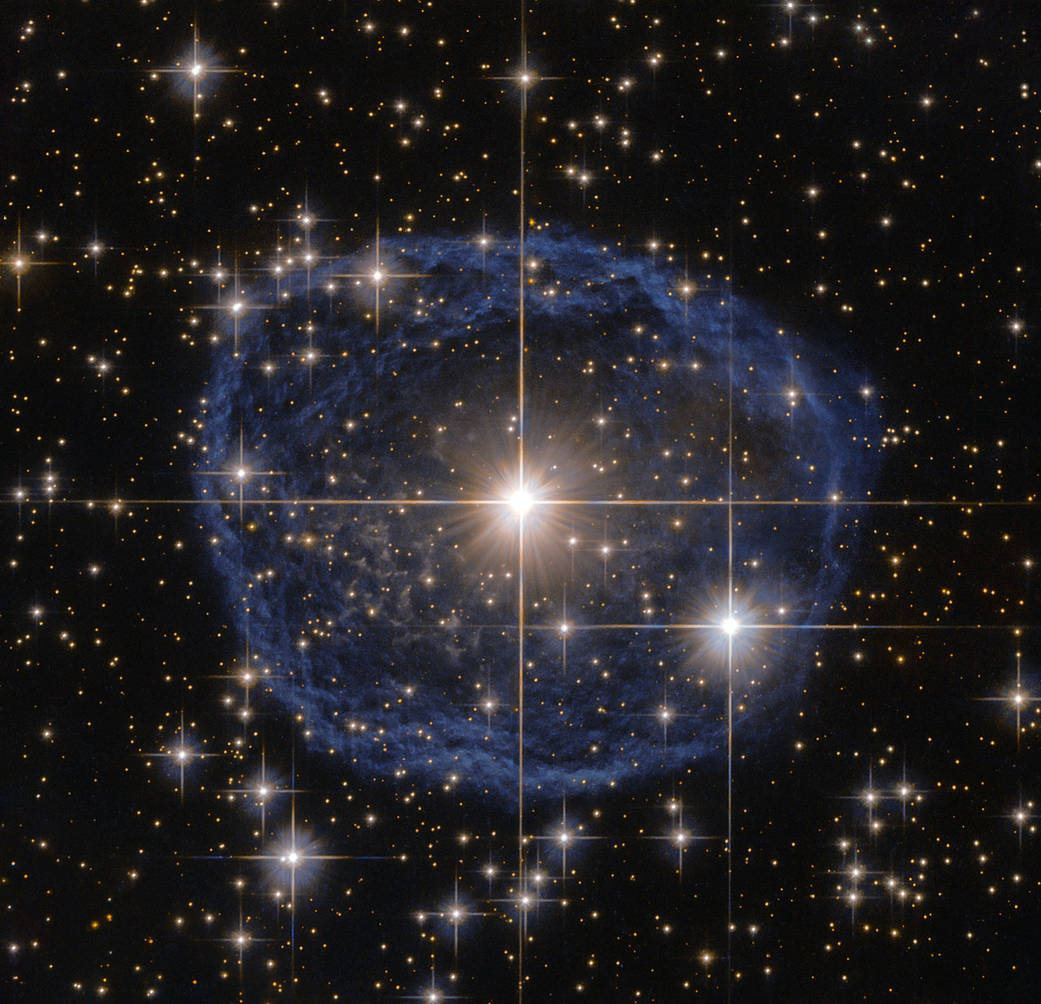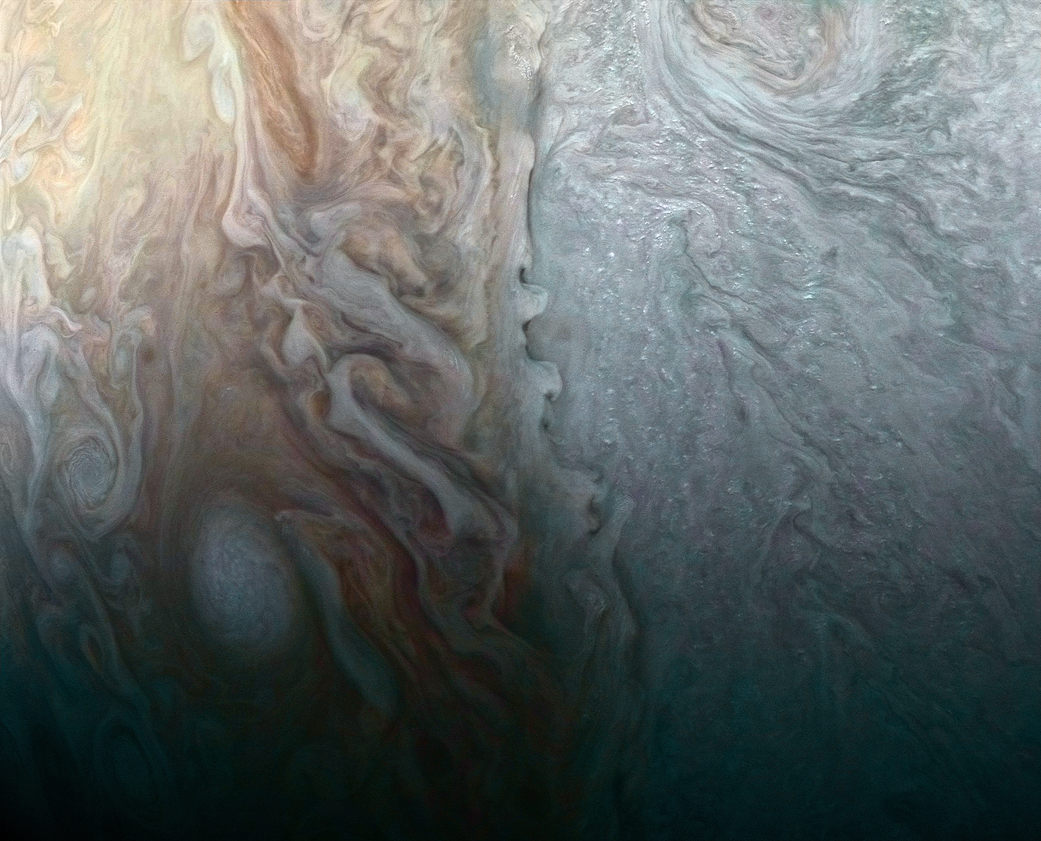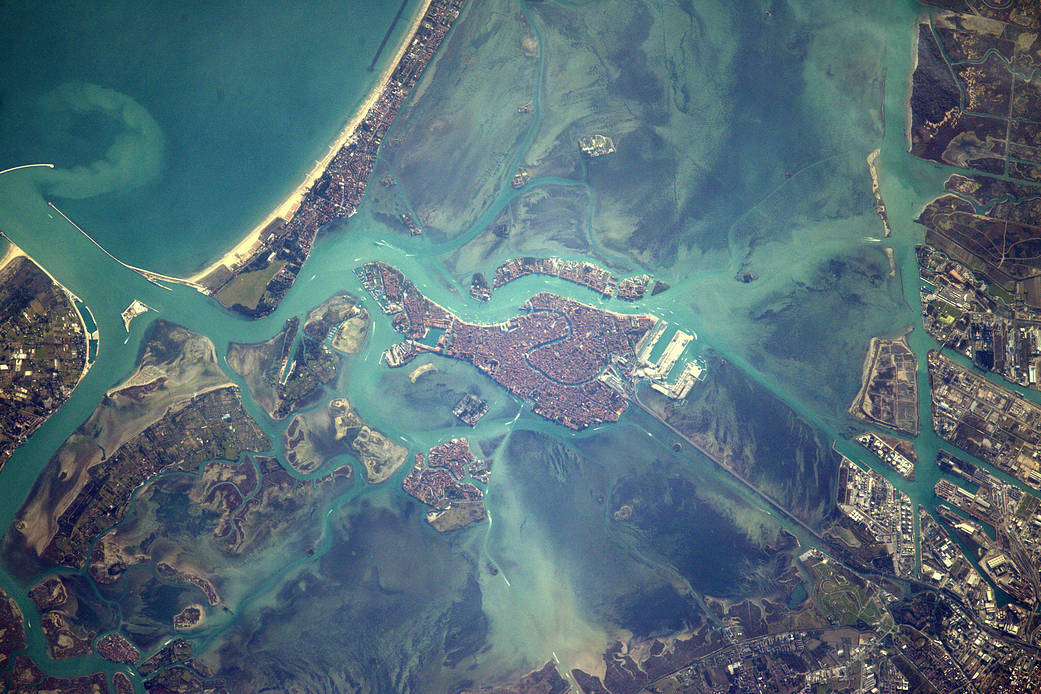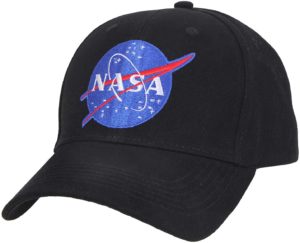NASAの今日の1枚は、 NGC6523または干潟星雲として知られるメシエ8星雲の画像です。
ただし、実際こう見えるのではなく地球上の天文台からの観測画像(青色と白色)にチャンドラX線観測衛星のデータ(ピンク色)で画像処理したものです。
なお、「the Lagoon Nebula」は「干潟星雲」という和訳で一般的に使われていますが、 「 Lagoon 」 を「干潟」とか「潟」と訳すのはいささか日本的に過ぎるような気もします。
「珊瑚礁」とか「環礁」といったイメージの方が、アメリカ人の持っているイメージに相応しいかもしれません。
NASAの公式サイトのURLはこちら:
The Lagoon Nebula Gives Birth to Stars | NASA
以下はオリジナル原文と和訳です。
The Lagoon Nebula Gives Birth to Stars
Known as NGC 6523 or the Lagoon Nebula, Messier 8 is a giant cloud of gas and dust where stars are born. At about 4,000 light years from Earth, Messier 8 provides astronomers an excellent opportunity to study the properties of very young stars. Many infant stars give off copious amounts of high-energy light including X-rays, which are seen in the Chandra data (pink). The X-ray data have been combined with an optical image of Messier 8 from the Mt. Lemmon Sky Center in Arizona (blue and white).
NGC6523または干潟星雲として知られるメシエ8星雲は、星が誕生する巨大なガスと塵の雲です。 地球から約4,000光年の距離にあるメシエ8星雲は、星の誕生間際の特性を研究する天文学者にとって絶好の研究対象になっています。 多くの生まれたばかりの星は、チャンドラのデータ(ピンク)に見られるX線を含む大量の高エネルギー光を放出します。 そのX線データと、アリゾナ州のマウントレモンスカイセンターからのメシエ8を観測した光学画像(青と白)と画像合成処理したものがこの画像です。
Image Credit: X-ray: NASA/CXC/SAO; Optical: Adam Block/Mount Lemmon SkyCenter/University of Arizona
Last Updated: Aug 13, 2021
Editor: Yvette Smith
